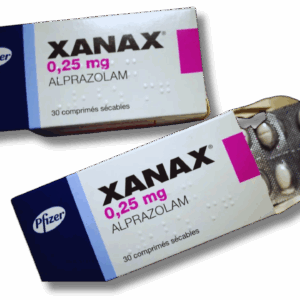Diazepam
Original price was: £3.47.£2.47Current price is: £2.47.
Description
Diazepam is a benzodiazepine medication that helps manage anxiety, muscle spasms, seizures, and symptoms of alcohol withdrawal. It calms the brain and nerves, so it’s widely prescribed for these issues. Diazepam often serves as a short-term fix for severe anxiety or before certain medical procedures.
People often wonder how diazepam works, what side effects to expect, and the risks of dependence. If you’re considering this medicine for yourself or someone you care about, it’s worth knowing the basics.
What Is Diazepam?
Diazepam is a prescription drug that treats anxiety, muscle spasms, seizures, and symptoms related to alcohol withdrawal. It calms the brain, so doctors use it for a range of medical situations.
Benzodiazepine Drug Class
Diazepam belongs to the benzodiazepine family. These medicines have a calming effect on the brain and nervous system. In the UK, they’re controlled drugs, so their use and supply are tightly regulated to prevent misuse.
You might know diazepam by its brand name, Valium. It’s classed as an anxiolytic because it relieves anxiety. Benzodiazepines like diazepam appear in medical references such as the British National Formulary.
Doctors prescribe them following patient information leaflets that outline uses and cautions. They usually keep treatments short—often not more than four weeks—to lower the risk of dependence or side effects.
Mechanism of Action
Diazepam acts on the brain by affecting neurotransmitters. Its main job is to boost gamma-aminobutyric acid (GABA), a natural calming chemical in the brain.
When GABA activity goes up, nerve signals slow down, which makes you feel sedated and calm. By boosting GABA, diazepam helps reduce abnormal excitement in the brain.
This is why it works for anxiety, muscle spasms, and seizures. The extra GABA action leaves people feeling calmer and more relaxed.
Table: Diazepam Effects Based on GABA Activity
| Action | Result |
|---|---|
| Increases GABA | Calms brain activity |
| Reduces nerve signals | Lowers anxiety and muscle spasms |
| Sedative effect | Helps with sleep and stops seizures |
Forms and Presentations
Diazepam comes in a few different forms. The most common are oral tablets—2 mg, 5 mg, and 10 mg.
There’s also a liquid version for people who can’t swallow tablets. In emergencies or hospitals, diazepam is available as an injection (sometimes called Diazepam Injection BP) and as rectal tubes.
Rectal tubes are often used for children with seizures because they act fast. Medicine packs always include a patient information leaflet for safe use.
Doctors pick the most suitable form based on what the patient needs, the specific condition, and how quickly the medicine should work.
Medical Uses of Diazepam
Diazepam is a benzodiazepine that calms, relaxes muscles, and controls seizures. Doctors prescribe it for severe anxiety, muscle spasms, seizures, and to help with alcohol withdrawal symptoms.
Treatment of Anxiety and Panic Attacks
Diazepam is often used to treat anxiety disorders, including general anxiety, panic attacks, and agitation. It works by changing brain chemicals that might be unbalanced in people with anxiety.
Doctors sometimes give diazepam before medical procedures or surgery as a pre-med to help patients relax. It can be given before dental or minor surgical work, especially when anaesthetics are involved.
Some people use diazepam as a short-term sleeping pill for severe insomnia related to anxiety. Long-term daily use isn’t recommended because of the risk of dependence.
Managing Muscle Spasms and Seizures
Diazepam helps treat muscle spasms from injuries or certain medical conditions. As a muscle relaxant, it eases pain, stiffness, and discomfort.
It’s also used in emergencies for fits or seizures, like those from epilepsy or high fever. Doctors might give it as an injection or rectal tube if someone can’t swallow tablets.
People with ongoing seizure conditions might get diazepam as part of their treatment plan. Doctors keep a close eye on the dose to limit side effects and dependence.
Alcohol Withdrawal and Related Conditions
During alcohol withdrawal, people can have tremors, sweating, agitation, and trouble sleeping. Diazepam helps manage these symptoms and lowers the risk of severe withdrawal seizures.
Hospitals sometimes use diazepam to keep patients safe and comfortable during the first stages of withdrawal. It relaxes the body and helps restore calm while the system adjusts to less alcohol.
Diazepam doesn’t treat alcoholism itself—just the symptoms that come with stopping drinking suddenly after heavy use. Doctors monitor doses closely for safety.
Important Safety Information and Precautions
Diazepam treats anxiety, muscle spasms, and some seizure disorders. There are warnings and possible medicine and health risks to know before starting.
Warnings and Contraindications
Some people shouldn’t use diazepam, including those with severe liver disease or acute narrow-angle glaucoma. It’s also not right for people with myasthenia gravis or serious breathing problems like sleep apnoea.
Anyone with a history of allergic reactions to diazepam or other benzodiazepines—especially swelling or trouble breathing—needs to avoid it. Pregnant women shouldn’t take diazepam unless a doctor says it’s necessary, since it could harm the baby.
Breastfeeding isn’t recommended during treatment. It’s also important not to drive or use heavy machinery after taking diazepam, as it can cause drowsiness, confusion, or poor coordination.
Interactions and Potential Risks
Diazepam can interact with other medicines, like antidepressants, street drugs, and alcohol. Mixing these increases the risk of sedation, breathing problems, or other side effects.
Don’t drink alcohol when taking diazepam. It makes drowsiness worse and can lead to dangerous breathing problems or accidents.
Doctors might use diazepam for alcohol withdrawal in medical settings, but mixing it with alcohol otherwise isn’t safe. People with a history of drug abuse need to be extra careful.
Here are some medicines that may interact:
| Medicine Type | Example |
|---|---|
| Antidepressant | Sertraline, Fluoxetine |
| Opioid painkiller | Morphine, Codeine |
| Antihistamine | Diphenhydramine, Chlorphenamine |
Always tell your doctor about all medicines you’re taking before starting diazepam.
Side Effects and Dependence
Diazepam can cause a range of side effects, from mild to serious. There’s also a risk of dependence and withdrawal, especially with long-term use or higher doses.
Common and Serious Side Effects
Some people feel drowsy, dizzy, or weak in the muscles after taking diazepam. These symptoms make driving or using machinery unsafe.
Confusion or memory problems can happen, especially in older adults. Serious side effects are rare but can include allergic reactions, trouble breathing, or a slow heartbeat.
Some people might notice mood changes, hallucinations, or a skin rash. The risk of side effects goes up with higher doses, long-term use, or mixing with other sedating drugs.
Anyone with serious symptoms should get medical help right away. Side effects can be reported to the Yellow Card Scheme in the UK.
Dependence, Withdrawal, and Overdose
Using diazepam for more than a few weeks can lead to dependence. The body gets used to the medicine, so stopping suddenly may cause withdrawal symptoms.
These can include sweating, shaking, anxiety, insomnia, nausea, and headaches. Withdrawal can be distressing and sometimes lasts weeks.
In rare cases, stopping suddenly might trigger seizures or psychosis. Doctors usually recommend tapering the dose slowly to lower withdrawal risks.
Taking too much diazepam, or mixing it with other sedatives like opioids, can cause overdose. Signs include extreme drowsiness, confusion, shallow breathing, and loss of consciousness. Overdose is a medical emergency—get help fast.
Frequently Asked Questions
Diazepam is a prescription drug used for several health problems, mostly anxiety, seizures, and muscle issues. It works by calming certain parts of the brain.
What are the typical uses of Diazepam in clinical practice?
Doctors commonly prescribe diazepam for anxiety disorders, muscle spasms, and certain seizures. It’s also used to help with alcohol withdrawal symptoms. Sometimes, it’s given before medical procedures for sedation.
How is Diazepam administered effectively?
Diazepam can be taken as tablets, oral solutions, or injections. The method depends on the condition and the patient’s needs. Doctors decide the best way to give it on a case-by-case basis.
What dosage of Diazepam is commonly prescribed for anxiety?
For anxiety, adults usually start with 2 mg to 5 mg, two to four times a day. The doctor may adjust the dose based on how the patient responds. Don’t take more than you’re prescribed.
Can you elucidate the mechanism of action of Diazepam?
Diazepam works by increasing the effect of a natural chemical called gamma-aminobutyric acid (GABA). This helps calm nervous activity, relaxes muscles, and prevents seizures.
What are the predominant side effects associated with Diazepam?
Drowsiness is the most common side effect. Others include feeling tired, muscle weakness, and poor coordination. Confusion can also happen, especially in older adults.
In what ways does Diazepam differ from other benzodiazepines like Xanax?
Diazepam sticks around in the body longer than Xanax (Alprazolam). So, its effects tend to last quite a bit more.
Both medicines can help with anxiety. Xanax usually gets picked for quick, short-term relief, while Diazepam sometimes gets the nod for muscle spasms or when you need something that works longer.




